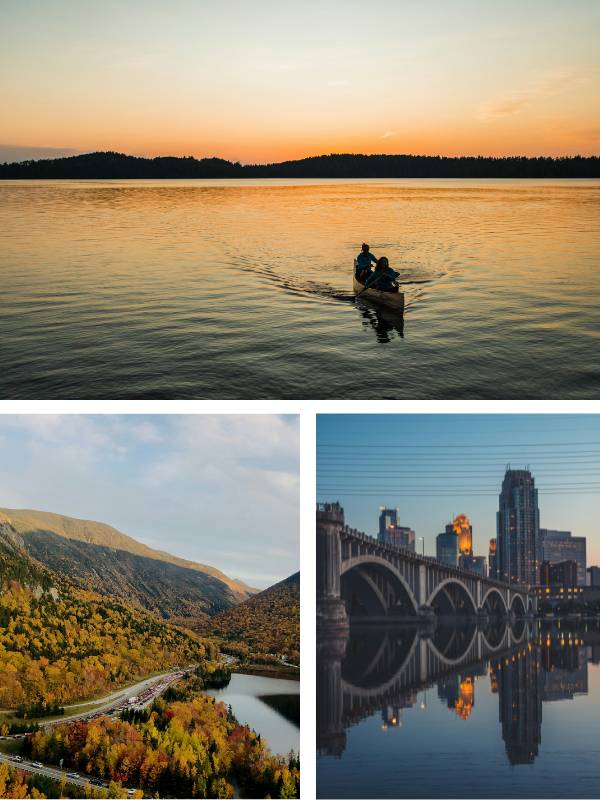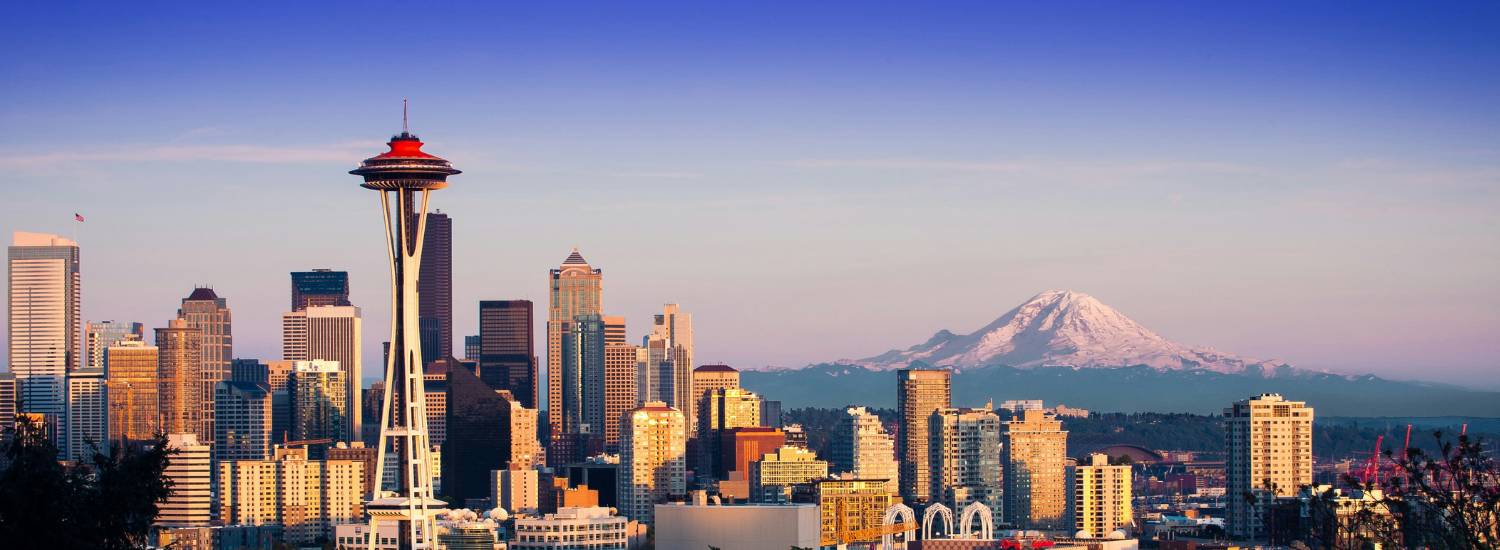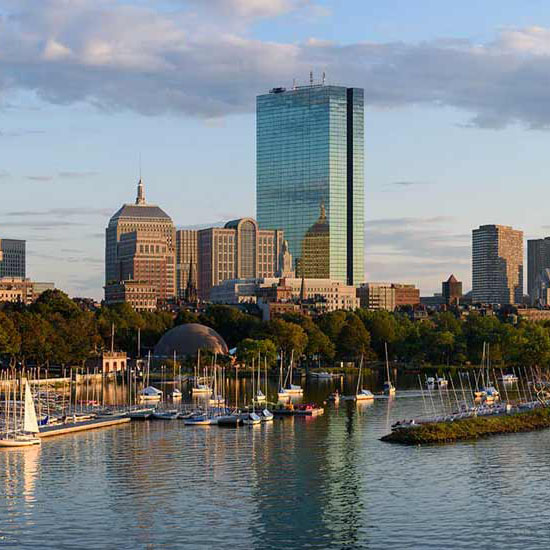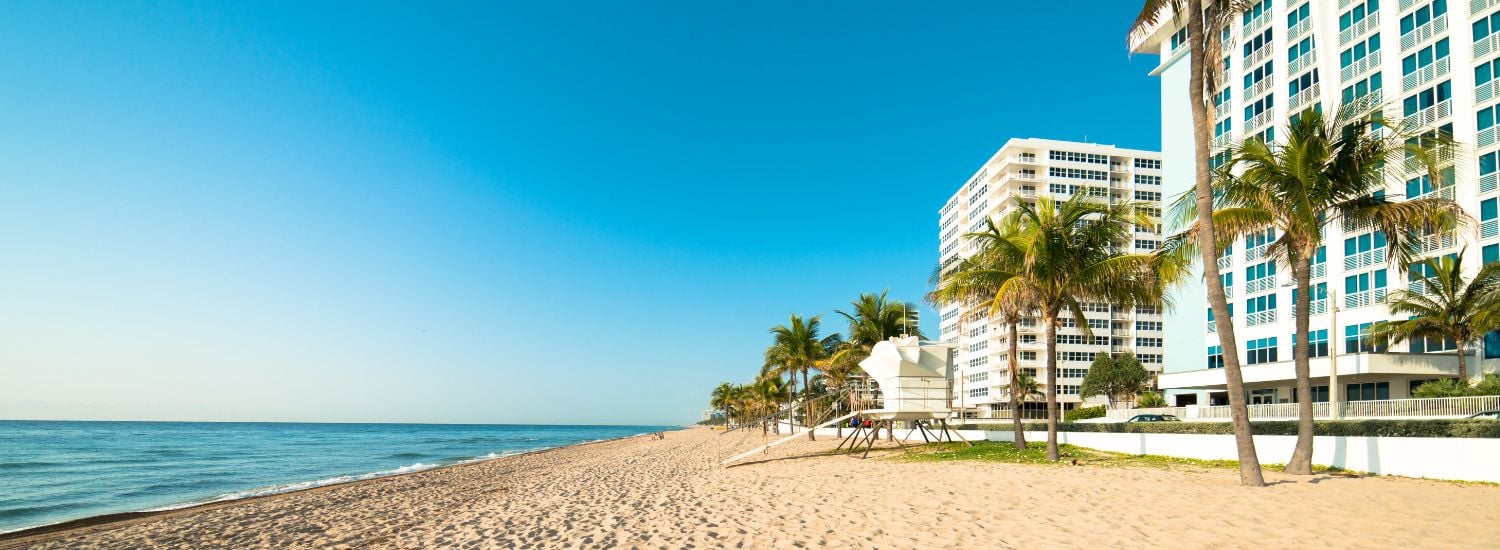Before packing, check this list of items prohibited from entering a particular country or region.
Key takeaways
- The best states to live in in the US for 2025 are Washington, Colorado, Oregon, and Vermont.
- The biggest state is Alaska at 665,384 mi², accounting for around 17% of the total US land mass.
- The best state to raise a family is Massachusetts, according to a 2025 report by WalletHub, followed by Minnesota, North Dakota, Nebraska, and New Hampshire.

Best states to live in in the US for 2025*
The best states to live in in the US are Washington, Colorado, Oregon, and Vermont. When moving to the United States, choosing your new home's location depends on your family's needs and wants, such as job openings, quality of schools, cost of living, amenities, and climate. Factors like community programs, entertainment options, and overall quality of life also play an essential role.
Below, we explore each state in more detail, helping you make the best decision about where to live in the US:
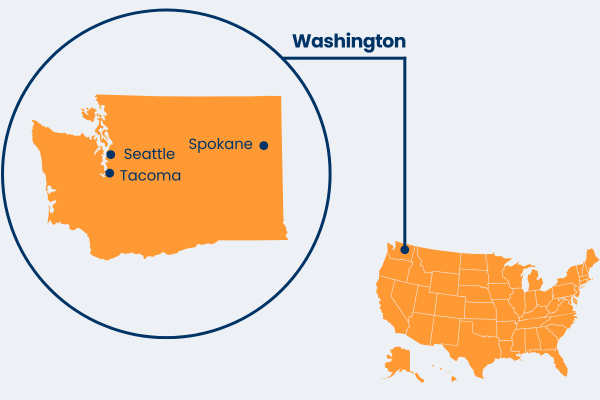
Washington
The Evergreen State combines dramatic landscapes, including snow-capped mountains and fern-covered rainforests, with a strong economy rooted in tech, aerospace, and agriculture. Seattle, the largest city, is known for its cultural output, mild climate, and misty skies.
Washington residents enjoy zero state income tax, a progressive social climate, and access to world-class employers in a region that balances innovation with natural beauty.
Population: 7.7M
Overall cost of living: 10th highest in the US
Utility costs: 18th lowest in the US
Avg. annual salary: US$78,428 (£61,367/€71,021)
Median house price: US$575,894 (£450,615/€521,508) — 4th highest in the US
Avg. 2-bed monthly rent: US$1,441 (£1,127/€1,304)
In-demand jobs: software developers, aerospace engineers, renewable energy specialists
Expat hotspots: Seattle, Spokane, Tacoma
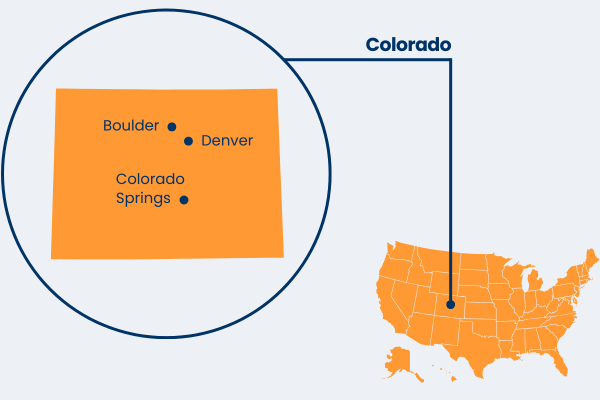
Colorado
The eighth-largest US state is known for its diverse landscapes, high elevation, and thriving snow sports tourism industry. Colorado's economy has recently expanded into military sectors, including the U.S. Air Force Academy.
The Centennial State offers residents a high quality of life with abundant sunshine and endless outdoor recreational options. Major cities like Denver and Boulder combine access to the Rocky Mountains and a commitment to environmental sustainability.
Population: 5.7M
Overall cost of living: 19th highest in the US
Utility costs: 13th lowest in the US
Avg. annual salary: US$66,825 (£52,288/€60,514)
Median house price: US$539,151 (£421,865/€488,235) — 5th highest in the US
Avg. 2-bed monthly rent: US$1,408 (£1,101/€1,275)
In-demand jobs: data analysts, civil engineers, healthcare providers
Expat hotspots: Denver, Colorado Springs, Boulder
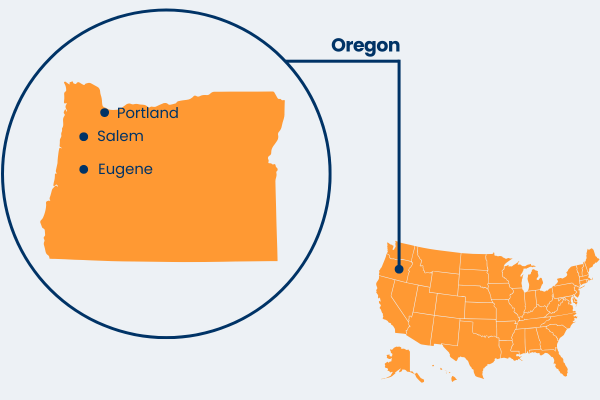
Oregon
Once driven by fishing and agriculture, today, Oregon's economy thrives on technology, manufacturing, and the Willamette Valley wine industry. Natural attractions include the Columbia River Gorge and Crater Lake.
Oregonians benefit from no state sales tax, access to the Pacific coast, government support for environmental programs, and a culture that values independent businesses and entrepreneurs. Portland, the state's largest city, prioritises innovative public transport and independent arts.
Population: 4.2M
Overall cost of living: 15th highest in the US
Utility costs: 14th lowest in the US
Avg. annual salary: US$63,536 (£49,714/€57,535)
Median house price: US$487,244 (£381,250/€441,230) — 8th highest in the US
Avg. 2-bed monthly rent: US$1,356 (£1,061/€1,227)
In-demand jobs: environmental scientists, software developers, educators
Expat hotspots: Portland, Salem, Eugene
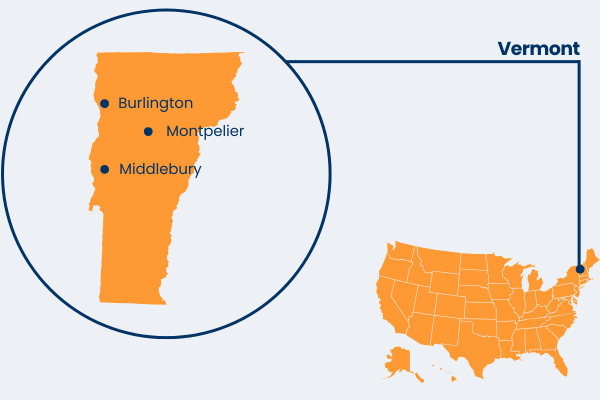
Vermont
The Green Mountain State borders Canada, New York, Massachusetts, and New Hampshire, with a landscape dominated by forests, lakes, and majestic mountains. The state is a leading producer of high-quality maple syrup and boasts iconic brands like Ben & Jerry's.
Vermont residents enjoy a slower pace of life and a deep commitment to community and conservation. Furthermore, the state supports small-scale agriculture and public service improvements.
Population: 643,000
Overall cost of living: 9th highest in the US
Utility costs: 7th highest in the US
Avg. annual salary: US$52,720 (£41,251/€47,741)
Median house price: US$373,001 (£291,859/€337,776) — 22nd highest in the US
Avg. 2-bed monthly rent: US$1,350 (£1,056/€1,222)
In-demand jobs: nurses, IT specialists, environmental consultants
Expat hotspots: Burlington, Montpelier, Middlebury
*figures accurate as of 2025
Sources: US Census Bureau, World Population Review, StatsAmerica, Zillow
What is the least populated state?
The least populated state is Wyoming, with 576,851 residents as of the official 2020 US census. The Equality State covers more than 97 square miles of the total land area — the tenth largest in the country. Most people live in small towns or rural communities full of wide open spaces and enjoy a low cost of living, low crime rates, and low traffic density. Further benefits include zero state income tax and an overall sales tax of just 4% (roughly 8% lower than in New York).

Facts about Alaska*
Population: 740,133
Land area: 586,412 mi²
Water area: 91,316 mi²
Total area: 665,384 mi²
Largest city: Anchorage (1,946.69 mi² total land area)
Capital city: Juneau
Coastline: 6,640 miles (longest in the US)
Avg. annual salary: $86,299 (£67,666/€78,925) — 7th highest in US
Permanent Fund Dividend (PFD) 2024: $1,702 (£1,334/€1558)
Cost of living ranking: 5th highest in the US
Alaska accounts for around 17% of the total US land mass, yet remains sparsely populated, with just one person per square mile.
What is the biggest state?
The biggest state is Alaska, at 665,384 mi², it's more than twice the size of second-place Texas (268,596 mi²) and a whopping forty times bigger than the smallest state, Rhode Island (1,545 mi²). Alaska accounts for around 17% of the total US land mass, yet remains sparsely populated, with just one person per square mile. Vast forests, mountains, and glaciers make up most of the undeveloped state, with long distances between towns and cities.
Despite its challenging climate and limited wintertime daylight, Alaska attracts outdoor enthusiasts, geologists, climate scientists, and oil industry professionals. It's also home to Mount McKinlay, the tallest mountain in North America, and several national parks. Though the cost of living can be high (especially in remote areas), the state attracts those looking for a slower pace of life, no state income tax, and yearly financial payments for all citizens.
*figures accurate as of 2025
Sources: Britannica, US Census Bureau, Alaska.gov, StatsAmerica, Congress.gov, World Population Review
Massachusetts takes the top spot thanks to its highly-regarded public school system, world-class higher education, including Harvard and MIT, and low poverty rates.
Best state to raise a family
The best state to raise a family is Massachusetts, according to a 2025 report by WalletHub, followed by Minnesota, North Dakota, Nebraska, and New Hampshire. WalletHub ranked each state based on five key dimensions: Family Fun, Health & Safety, Education & Child Care, Affordability, and Socio-economics. They used 50 relevant metrics, including family income, housing affordability, healthcare quality, crime rates, and school quality.
Massachusetts takes the top spot thanks to its highly-regarded public school system, world-class higher education, including Harvard and MIT, and low poverty rates. Despite the second-highest cost of living in the country, the state's strong job market and high average salary ($80,329/£62,837,€73,393) balance the expenses.
Minnesota placed second, offering a high median family income and excellent public healthcare, with affordable housing below the national average. North Dakota followed in third, benefiting from a low unemployment rate and affordable housing, partly driven by a strong energy sector. Nebraska ranked fourth, thanks to its low cost of living and well-respected educational system. New Hampshire rounded out the top five, boasting strong job security and a high overall quality of life.
